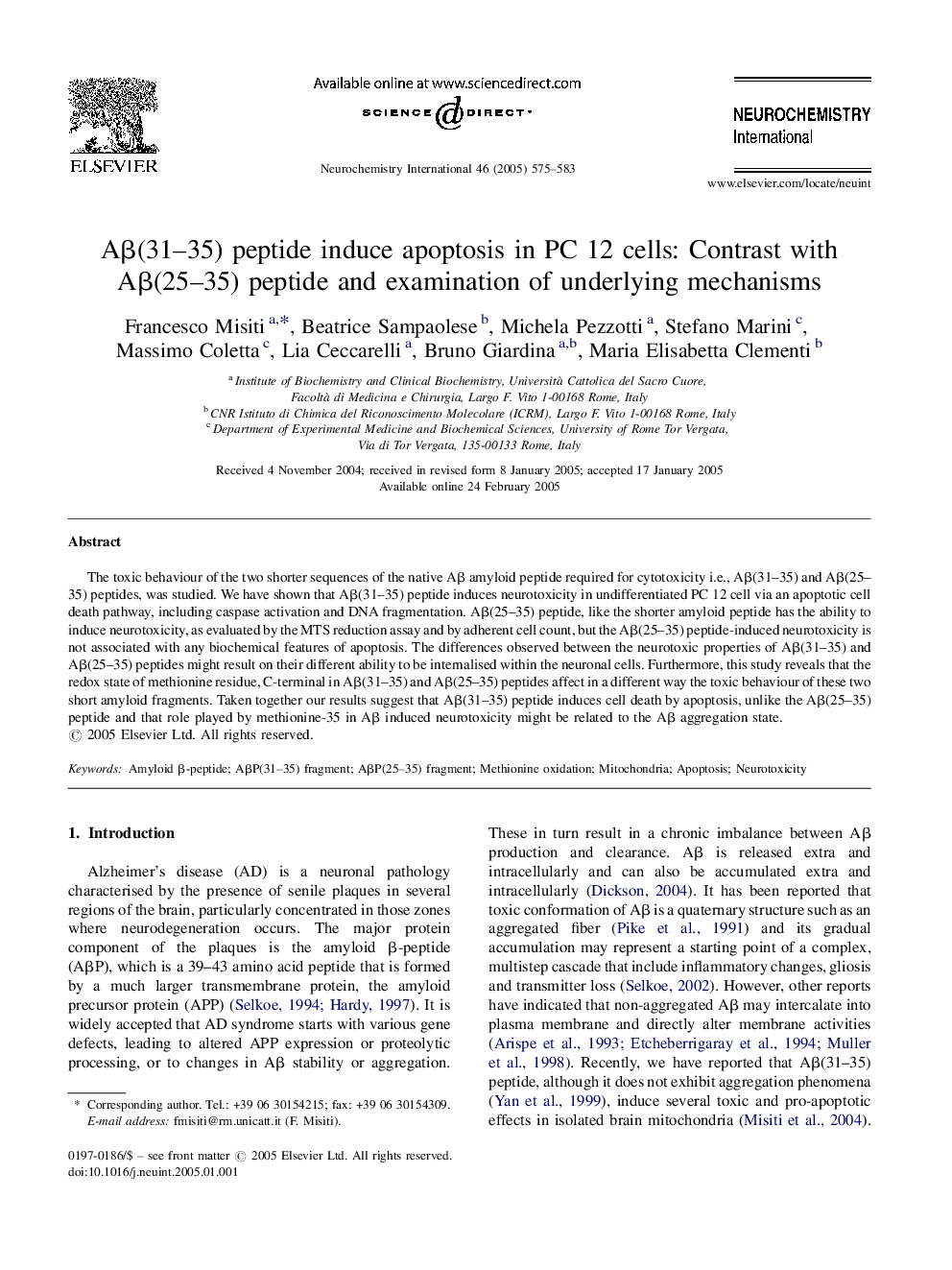| Article ID | Journal | Published Year | Pages | File Type |
|---|---|---|---|---|
| 10958529 | Neurochemistry International | 2005 | 9 Pages |
Abstract
The toxic behaviour of the two shorter sequences of the native Aβ amyloid peptide required for cytotoxicity i.e., Aβ(31-35) and Aβ(25-35) peptides, was studied. We have shown that Aβ(31-35) peptide induces neurotoxicity in undifferentiated PC 12 cell via an apoptotic cell death pathway, including caspase activation and DNA fragmentation. Aβ(25-35) peptide, like the shorter amyloid peptide has the ability to induce neurotoxicity, as evaluated by the MTS reduction assay and by adherent cell count, but the Aβ(25-35) peptide-induced neurotoxicity is not associated with any biochemical features of apoptosis. The differences observed between the neurotoxic properties of Aβ(31-35) and Aβ(25-35) peptides might result on their different ability to be internalised within the neuronal cells. Furthermore, this study reveals that the redox state of methionine residue, C-terminal in Aβ(31-35) and Aβ(25-35) peptides affect in a different way the toxic behaviour of these two short amyloid fragments. Taken together our results suggest that Aβ(31-35) peptide induces cell death by apoptosis, unlike the Aβ(25-35) peptide and that role played by methionine-35 in Aβ induced neurotoxicity might be related to the Aβ aggregation state.
Related Topics
Life Sciences
Biochemistry, Genetics and Molecular Biology
Cell Biology
Authors
Francesco Misiti, Beatrice Sampaolese, Michela Pezzotti, Stefano Marini, Massimo Coletta, Lia Ceccarelli, Bruno Giardina, Maria Elisabetta Clementi,
